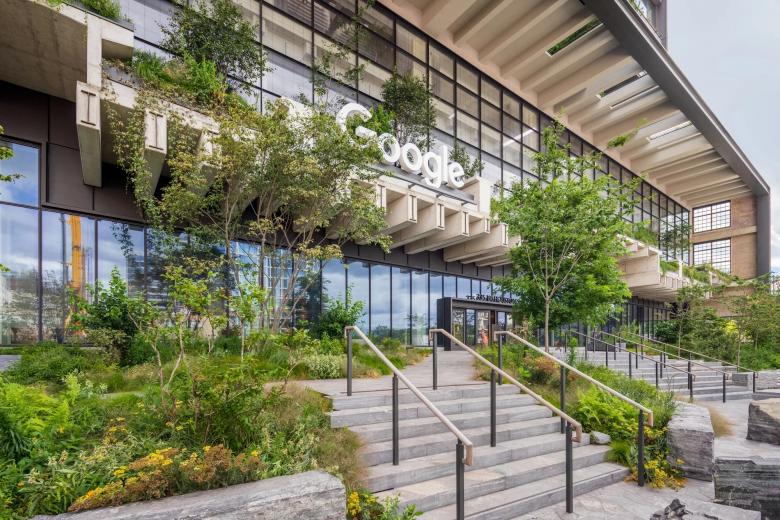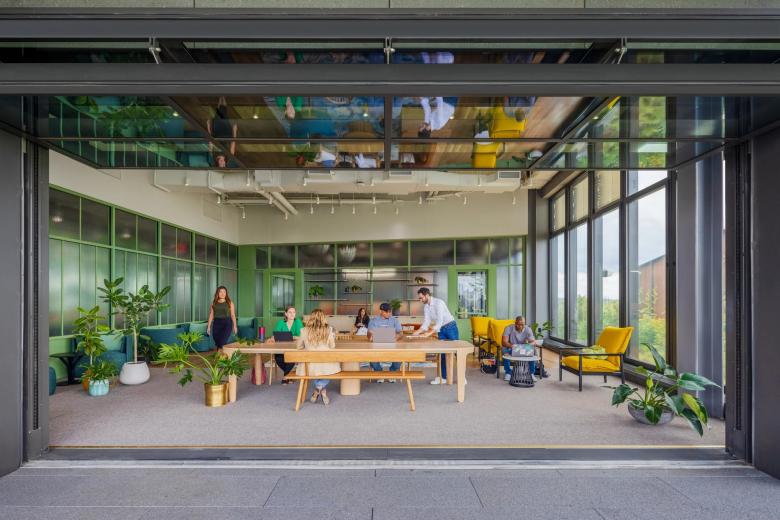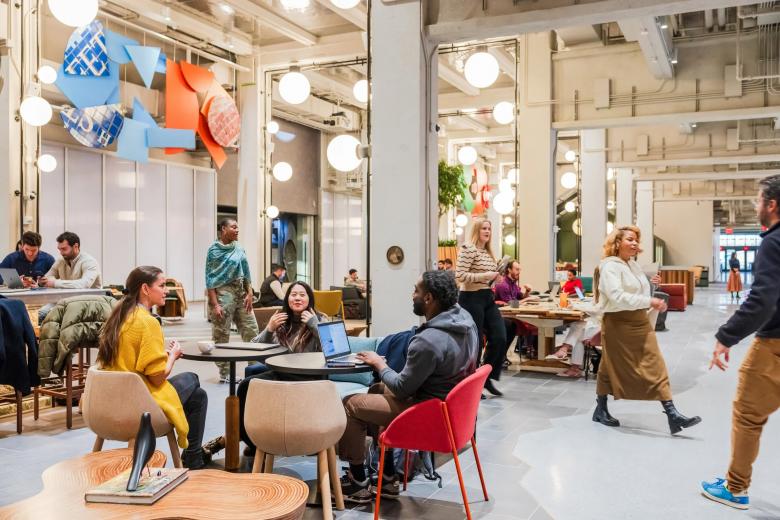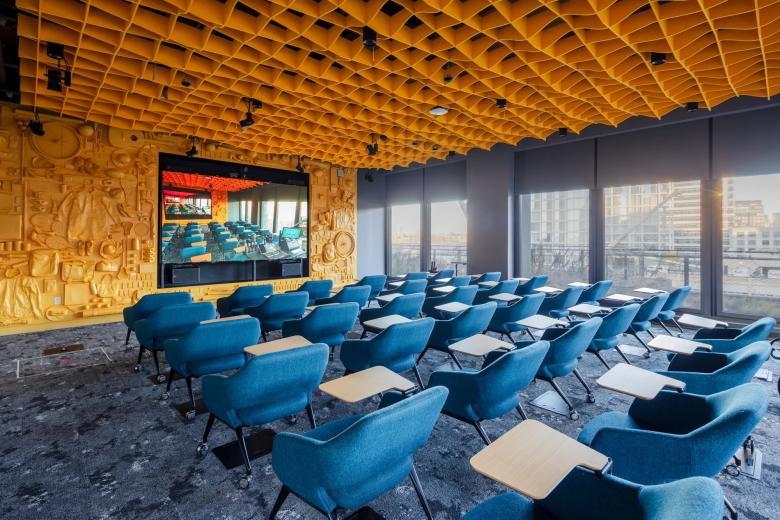Inside Google's New St. John's Terminal Office
John Hill
27. February 2024
Photo courtesy of Google
Google, which occupies a string of old buildings in Manhattan's Chelsea neighborhood, has just opened a new headquarters in Hudson Square, about a mile south, in an old building that served as the southern terminus of the High Line. A short film from Google takes viewers inside the renovation and addition by COOKFOX Architects.
Google's growth in New York City has come, not in the form of new construction or a large campus, but in the purchase and renovation of old buildings — large buildings often filling full blocks. It started with the old Port Authority building at Ninth Avenue and West 15th Street in Chelsea, bought by Google in 2010 for $1.8 billion. Eight years later, Google bought Chelsea Market, the well-known building that sits directly across Ninth Avenue and literally spans the High Line, for $2.4 billion. Two large buildings filling two city blocks was not enough, so Google proceeded to rent out space in the building directly west of Chelsea Market across Tenth Avenue, and then last year the tech juggernaut opened Pier 57 — jumping from Ninth Avenue to the East River in thirteen years. Diller Scofidio + Renfro was the architect for that transformation, discussed in a short film released last year:
In 2021, even before Google moved into Pier 57, it made another real estate deal, buying the St. John's Terminal development from Oxford Properties for $2.1 billion (the project consists of a three-story building from 1934 and a nine-story vertical expansion). News of the purchase in fall of that year was welcome, given that the pandemic was keeping many workers at home — a situation that has not fully reversed itself in the nearly three years since. COOKFOX's transformation of the two-block-long terminal building accordingly provides fresh air in the form of planted exterior spaces; the architects boast it is “a high-performance, biophilic workplace.” Furthermore, the new floors above it are shaped to provide additional terraces on upper floors. Most striking though is the expression of the terminal's railroad infrastructure on the building's north elevation: a reminder that, before it was a public park, the High Line was considerably longer and a functioning part of an industrial city. A short film from Google discusses the tech company's intentions behind the project and, courtesy of architect Rick Cook, some history on the building and words on how the firm transformed and added to it:



